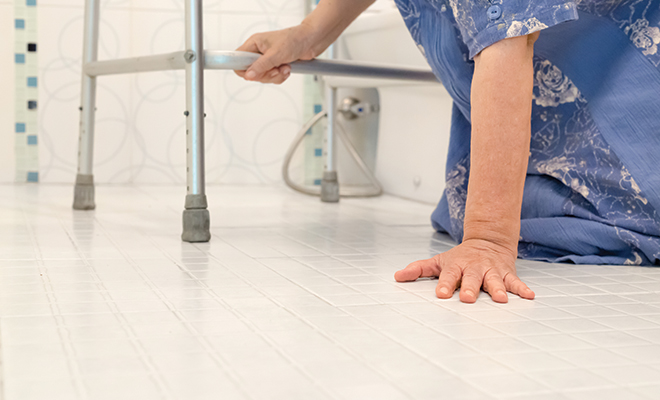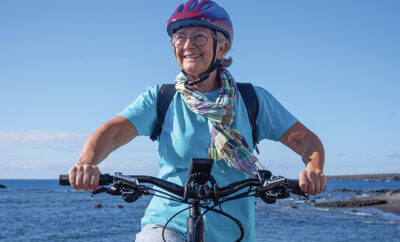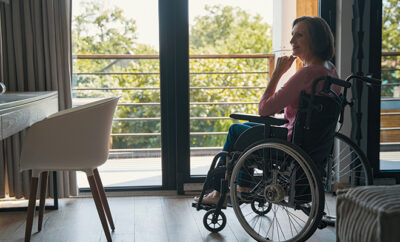
When a Fall Can Be Fatal
Do you know what the leading cause of fatal and non-fatal injuries is for older Americans? It is falls, which can greatly impact an older adult’s independence and safety as well as lead to significant personal costs.
While some might argue falling is just an inevitable part of growing older, that is not necessarily true. Falls among the senior population can be greatly reduced by applying practical lifestyle adjustments, recognizing the hazards for such in the home, and making adjustments to eliminate or minimize those hazards. With aging comes the inevitable loss of strength and balance as well as changes in vision, all of which can increase the risk of falling. For some people, falls may only result in embarrassment, a skinned knee or perhaps even a broken bone. For others, however, a fall can result in a significant lifestyle change or even death.
As reported by the U.S. Centers for Disease Control and Prevention, one in four Americans age 65 and older fall each year. Every 11 seconds, a senior is treated in an emergency room as a result of a fall. Every 19 minutes, an older adult dies from a fall. More than 2.8 million injuries are treated in emergency departments each year, along with more than 800,000 hospitalizations and over 27,000 deaths. Those are staggering statistics, but there is something that can be done to mitigate those numbers. With or without injury, a fall can greatly impact the quality of life for an older adult. It can limit activities and social engagement, leading to a sense of isolation, depression and physical decline.
The long-term effects of falls are frightening, as they are the most common cause of death and disability within the senior demographic, largely due in part to the risk of sustaining a traumatic brain injury, or TBI. Unfortunately, many older adults who do fall subsequently develop a fear of falling. As such, they tend to limit their overall mobility, which increases their chances of falling again in the future, due to reduced physical activity on a daily basis. The CDC reports that within the senior adult population, four in five TBI-related hospitalizations and deaths are the result of falls. When someone falls, the first thing that comes to mind are the visible physical injuries. However, a TBI can be a serious consequence of a fall and include a subdural hematoma, or brain bleed. Over time, it can lead to impaired memory or thinking, cognitive decline, and sometimes even emotional or functional impairments.
Symptoms of a TBI include lack of consciousness, dizziness, blurred vision, a headache, difficulty speaking, disorientation, ringing in the ears, disrupted sleep patterns, challenges with retaining new information and the inability to recall what caused the injury. If you or a senior adult you know has sustained a fall and exhibits any of these symptoms, it is imperative to have that person evaluated by a medical care provider immediately. Because brain disorders develop over the long term, it is important to remain proactive, understanding the causes and symptoms, so the best course of treatment can be prescribed.
Reducing the risk of falling can start within the home. There are many things you can do make your home safer. Clear the floors and remove all clutter, electrical cords, throw rugs, small furniture and anything else that could pose a tripping hazard. Rearrange the furniture to allow for ample space to navigate between rooms. Install grab bars both inside and outside of the bathtub or shower and next to the toilet. Place railings on both sides of the stairs and make sure all stairways have good lighting. Keep all outdoor areas well lighted and walkways smooth and free from debris, puddles and ice. If necessary, use a cane or a walker.
Furthermore, an older adult is more likely to fall if they have a chronic condition, such as vision issues or a vitamin D deficiency. People who use medications that cause dizziness or balance problems are also at risk. Ask your medical care provider if any medications you are taking cause sleepiness or if you are deficient in vitamin D. If you are unable to do so, ask a friend, loved one or home care provider to assess your home for potential fall hazards and then have those removed. Stay current with eye exams and incorporate daily balance exercises, such as yoga, into your routine if approved by your health care provider.
Falling is a serious issue that cannot be ignored by older adults and caregivers. Falls can occur at any time and anywhere. Your best defense is to be aware and prepared. ■
Sources: ncoa.org, medicalalertadvice.com, medicalguardian.com and nsc.org.







